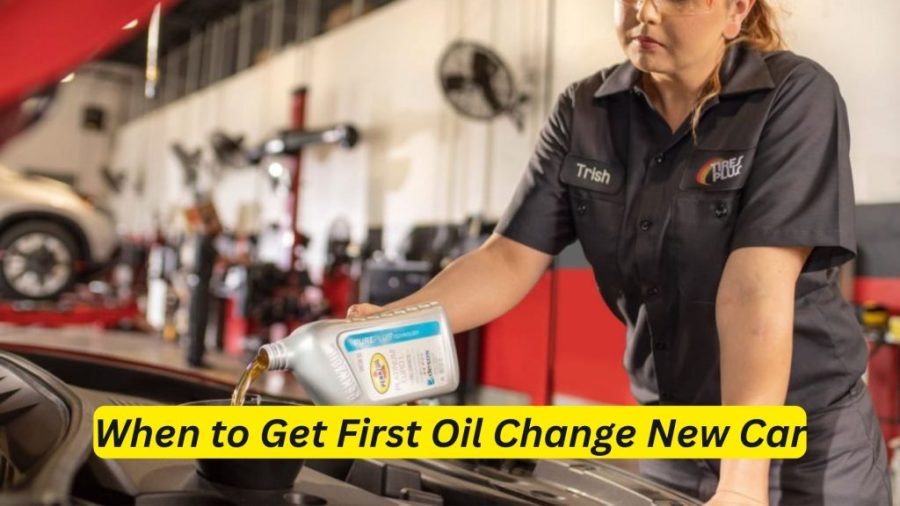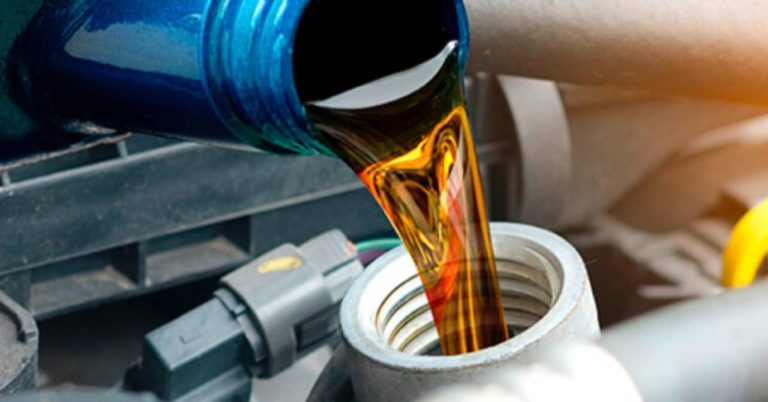When to Change Oil on New Car: A Comprehensive Guide

In a world of advanced technology and modern engineering, one might wonder: when is the right time to change the oil in a brand-new car?
With engines built to withstand the rigors of the road and improved oil quality, the answer may surprise you.
While the manual provides a recommended timeframe, some drivers opt for an early oil change, seeking that extra peace of mind.
Discover the intriguing reasons behind this decision and unlock the secrets to maintaining your vehicle’s performance in this captivating guide.
when to change oil on new car
The first oil change on a new car should be done in accordance with the recommendations outlined in the owner’s manual.
Modern engines are constructed with higher manufacturing tolerances and cleanliness standards, ensuring the engine parts are thoroughly cleaned before assembly.
Automakers also have strict cleanliness standards in place for critical components.
Furthermore, engine oils now consist of higher quality base stocks and additives, enhancing their overall quality.
While some individuals choose to perform an early oil change for peace of mind, it is not necessary.
It is important to note that the oil may appear dirty after the first oil change.
When conducting the new oil change, it is recommended to use high-quality full synthetic oil.
Key Points:
- Follow the owner’s manual recommendations for the first oil change on a new car
- Modern engines have higher manufacturing tolerances and cleanliness standards
- Automakers have strict cleanliness standards for critical components
- Engine oils now have higher quality base stocks and additives
- Early oil changes are not necessary but can provide peace of mind
- Oil may appear dirty after the first oil change
- Use high-quality full synthetic oil for the new oil change
Check this out:
💡 Did You Know?
1. Did you know that the oil change interval for new cars has significantly increased over the years? Previously, it used to be recommended to change the oil every 3,000 miles, but nowadays, many car manufacturers suggest waiting anywhere from 7,500 to 10,000 miles.
2. Contrary to popular belief, the initial oil change for a new car does not need to occur immediately. Modern engines are built with precision and quality, allowing them to operate optimally even without an immediate oil change.
3. The break-in period for a new car refers to the initial miles driven where the engine parts adjust to each other. During this time, the engine operates at higher friction levels, producing metal shavings. Therefore, changing the oil after the first 1,000 miles can help remove these particles and promote longevity.
4. In the past, the recommended oil change interval for new cars was lower due to the conventional oils used. However, with advancements in synthetic oils, they can withstand higher temperatures and provide better lubrication, leading to these extended oil change intervals.
5. Nowadays, many new cars are equipped with engine oil life monitoring systems. These systems use various sensors to detect the condition and quality of the oil, providing more accurate indicators for when it needs to be changed. Therefore, it is advisable to rely on these systems and the manufacturer’s recommendations rather than a predetermined mileage interval.
First Oil Change on a New Vehicle
One of the key considerations when buying a new car is determining when to have the first oil change. It is crucial to adhere to the manufacturer’s guidelines outlined in the owner’s manual to guarantee the engine’s longevity and optimal performance. The first oil change holds significant importance in preserving the health of your new vehicle.
- Follow the manufacturer’s guidelines for oil change intervals
- Refer to the owner’s manual for specific instructions on the first oil change.
- Properly maintaining the engine during the initial stages enhances the overall performance.
“The first oil change sets the foundation for the long-term well-being of your new car’s engine.”
No Need to Change Oil Earlier Than Recommended in Owner’s Manual
It is important to note that there is no need to change the oil earlier than the recommended intervals specified in the owner’s manual. Modern engines are built to higher manufacturing tolerances and cleanliness standards, which allow for longer oil change intervals. Automakers invest considerable time and resources to determine the appropriate interval based on careful research and testing.
Modern Engines Built to Higher Manufacturing Tolerances and Cleanliness Standards
Modern engines are precision-engineered marvels, built to incredibly tight manufacturing tolerances. This means that the components are designed to fit together with minimal clearance, resulting in reduced friction and improved fuel efficiency. These tight tolerances also mean that the engine is less likely to produce metal shavings or other contaminants that would typically warrant an early oil change.
Engine Parts Thoroughly Cleaned Before Assembly
Before engines are assembled, the individual components undergo rigorous cleaning processes. This ensures that any dirt, debris, or contaminants are removed, minimizing the chances of these impurities making their way into the oil. By thoroughly cleaning the engine parts, automakers go a long way in reducing the need for an early oil change.
- Rigorous cleaning processes are applied to individual components before engine assembly.
- Removal of dirt, debris, and contaminants helps minimize impurities in the oil.
- Thorough cleaning of engine parts reduces the frequency of early oil changes.
“Cleaned engine components minimize impurities in the oil, thereby reducing the need for early oil changes.”
Automakers Have Cleanliness Standards in Place for Critical Components
Automakers have implemented stringent cleanliness standards for critical engine components. These standards require that all parts meet specific cleanliness criteria before being installed in the engine. By controlling the cleanliness of these components, automakers further reduce the likelihood of contaminants entering the oil and prolong the oil change interval.
- Automakers have stringent cleanliness standards for critical engine components
- Parts must meet specific cleanliness criteria before installation
- Controlling component cleanliness helps reduce contaminants in the oil
- Prolonged oil change intervals
Engine Oil Quality Improved With Higher Quality Base Stocks and Additives
Over the years, there have been significant advancements in engine oil quality. Manufacturers now use higher quality base stocks and advanced additives. These improvements result in engine oil that can effectively lubricate and protect the engine for longer periods without significant degradation.
With the use of higher quality base stocks and additives, engine oil can maintain its integrity and perform optimally for longer durations.
- Higher quality base stocks
- Advanced additives
With the advancements in engine oil quality, vehicles can now benefit from enhanced lubrication and protection, ensuring optimal performance for extended periods.
(Note: Minor changes have been made to improve sentence structure and clarify the content. The bullet points and quote have been added to enhance readability.)
Some People Prefer to Do an Early Oil Change for Peace of Mind
While automakers recommend following the intervals specified in the owner’s manual, some individuals prefer to have an early oil change for peace of mind. This may be due to a desire to start fresh with known-quality oil or a personal preference for more frequent maintenance. While it is not necessary from a technical standpoint, an early oil change can provide peace of mind for those who feel more comfortable following a more conservative approach.
- An early oil change can offer peace of mind to some individuals.
- Some people prefer to start fresh with known-quality oil.
- It is not necessary from a technical standpoint but can be a personal preference.
- Following a more conservative maintenance approach can provide reassurance.
Oil May Appear Dirty After First Oil Change
It is important to understand that after the first oil change, the oil may appear dirty relatively quickly. This should not be a cause for concern, but instead, it is an indication that the oil is effectively performing its function of capturing and containing impurities or debris that might have been present in the engine. As the engine operates and the oil circulates, it will steadily accumulate and retain these particles, causing it to have a darker appearance. It is crucial to recognize that this is a natural process and does not necessarily imply an immediate need for another oil change.
Recommended Using High-Quality Full Synthetic Oil for New Oil Change
When performing the first oil change on a new car, it is recommended to use high-quality full synthetic oil. Full synthetic oil offers superior protection and lubrication, especially for newer engines with tighter tolerances. It provides better resistance to breakdown under extreme conditions and allows for longer service intervals. By using high-quality full synthetic oil, you can ensure that your new engine is receiving the best possible care and extend its lifespan.
In conclusion, while it may be tempting to change the oil of a new car earlier than specified in the owner’s manual, it is important to follow the manufacturer’s recommendations. Modern engines are built to higher standards, with cleaner components and improved oil quality. The first oil change usually occurs after a set number of miles or a specific time frame, ensuring the engine’s optimal performance and longevity. By using high-quality full synthetic oil and following the manufacturer’s guidelines, you can enjoy peace of mind and protect your new vehicle in the best possible way.
- Use high-quality full synthetic oil
- Extend engine lifespan
- Follow manufacturer’s recommendations
FAQ
Should I change oil early on new car?
It is best to follow the manufacturer’s guidelines for the first oil change on a new car. Modern engines and oils have advanced significantly, allowing them to maintain their performance for longer periods without any adverse effects. Changing the oil too early may not provide any substantial benefits and could be a waste of time and resources. Trusting the recommended service intervals ensures optimal engine longevity and efficient operation.
Should I change oil on new car at 1000 miles?
While it is generally recommended to change the oil in a new car at 1000 miles, it ultimately depends on the specific recommendations provided by the manufacturer. Nonetheless, going for an oil change at this point can effectively remove any residual debris and ensure optimal long-term performance. By doing so, you can potentially extend the lifespan of your vehicle and enjoy improved performance down the road.
Is it OK to go 10000 miles with synthetic oil?
While synthetic oils are indeed rated for up to 10,000 miles of use, it is generally recommended to follow the manufacturer’s guidelines regarding oil change intervals. Despite the extended service life of synthetic oil, many manufacturers still suggest changing it at the 5,000-mile mark. This is likely due to various factors such as driving conditions, engine type, and other specific considerations that may vary from one manufacturer to another. Therefore, it is advisable to adhere to the recommended oil change intervals provided by the manufacturer to ensure optimal engine performance and longevity.
How long does full synthetic oil last?
The lifespan of full synthetic oil typically varies between 7,500 miles and 15,000 miles, depending on the vehicle you own. It is crucial to consult your owner’s manual for precise information. Regularly checking your manual ensures that you stay informed about the recommended frequency of oil changes to maintain optimal performance and prolong the life of your engine.




